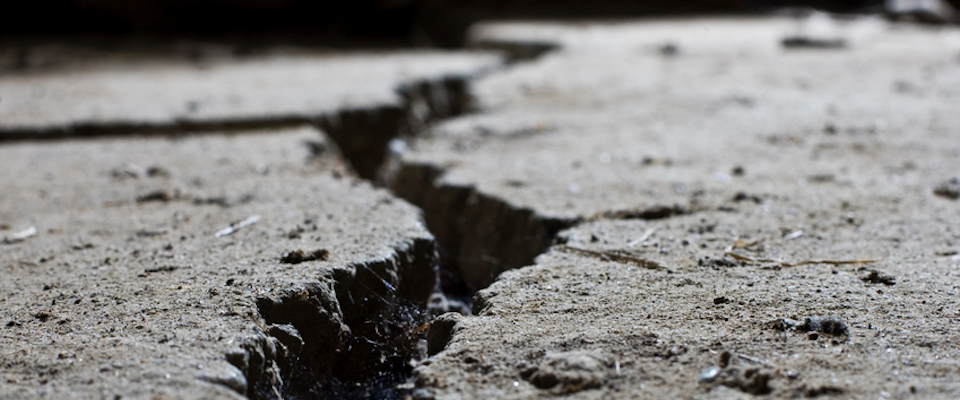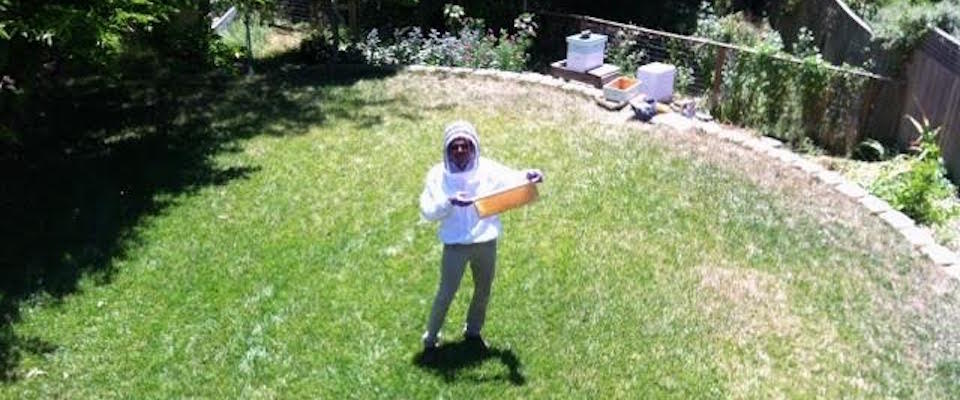The swarm of small temblors just off Bombay Beach in the Salton Sea on September 26 isn’t a sign that Palm Springs is about to become beachfront property, but it does point to the inevitability of the “Big One” hitting the South State, say seismologists.
“The southern portion of the San Andreas Fault hasn’t ruptured in more than 300 years, and it’s significantly overdue for a major event,” says Roland Bürgmann, a professor in the earth and planetary science department at UC Berkeley and a participating faculty member at the Berkeley Seismological Laboratory. “Events like this recent swarm, which are close to the expected time for a major rupture on the southern San Andreas, don’t relieve major stresses, but they can change the stresses, and indicate enhanced hazard.”
Bürgmann says the Bombay Beach swarm bears a strong semblance to the Elmore Ranch and Superstition Hills earthquakes of 1987, which also occurred near the Salton Sea. The 6.2 magnitude Elmore Ranch quake was followed one day later by the 6.6 Superstition Hills quake. Both earthquakes were caused by northeast striking faults perpendicular to the San Andreas Fault—and that’s the rub, emphasizes Bürgmann.
“We know that when these small northeast striking faults in that area become active, they change the stresses in nearby fault systems associated with the San Andreas,” Bürgmann says. “And in this case, the San Andreas Fault itself is the overriding concern.”
The main worry is that the San Andreas will “nucleate” at its southern terminus, and then rupture northward for several hundred kilometers. Such an event would likely cause a 7.0 earthquake in the Los Angeles Basin. For people who lived through the 1971 6.5 San Fernando Earthquake or the 1994 Northridge 6.7 quake, a 7.0 seismic event may not seem appreciably larger. But earthquakes are measured on a logarithmic scale, meaning that a 7.0 quake is 3.1 times stronger and releases 5.6 times the energy of a 6.5 event. This is particularly germane in locales such as the Los Angeles Basin, where much of the urban infrastructure is built on loose fill soils that shift, wobble, and even liquefy during earthquakes; every quantum of extra energy and earth movement may result in appreciably increased damage and loss of life.
“A 7.0 earthquake in the L.A. Basin would result in very substantial shaking,” says Bürgmann. “It’d be one of the worst natural disasters ever to occur in this country. “
Further, Bürgmann says, a major earthquake on the San Andreas Fault isn’t a possibility—over time, it’s a certainty. And the worst case scenario is the fault rupturing from south to north rather than the other way around, because a south-to-north rupture will result in more earth movement in the populated areas of Southern California.
“With that said, the recent swarms at Bombay Beach are not a good sign,” Bürgmann says. “It could be an indication that the southern end of the San Andreas is where a major rupture will nucleate.”
The Bombay Beach swarm has been duly noted by the U.S. Geological Survey, which employs seismic data to update earthquake risk on an ongoing basis. As of September 30, the USGS had determined that the Bombay Beach event translated as a 0.006% to 0.2% chance (roughly one in 10,000 to one in 500) of a magnitude 7 or greater earthquake occurring on the San Andreas Fault through October 7. That risk had been downgraded from a slightly higher figure posted shortly after the swarm.
There’s some good news out of all this, Bürgmann observes. The USGS updates indicate that the agency is slowly but surely groping toward an effective system for earthquake risk assessment.
“Their work is focused on operational earthquake forecasting, which is somewhat different than assessing long-term probabilities,” says Bürgmann. “Operational forecasting attempts to determine the probabilities of a large event after activity such as the recent Bombay Beach swarm, and also includes analysis of the possibility that any event is a foreshot (a prelude to a larger quake).”
Further, in conjunction with Berkeley and other university, state, and private partners, the USGS is developing ShakeAlert, an early warning system that could notify people of an impending quake. Depending on the distance to epicenter, such systems can provide a full minute warning prior to earth movement—enough time, in many cases, to let hospitals and other critical public facilities implement some mitigating measures and allow citizens to secure themselves from immediate hazard.
Perhaps goaded by the Bombay Beach swarm, Governor Jerry Brown signed a bill on September 29 funding continued development of a functional state earthquake early warning system.
Still, no long or short term warning system can adequately protect people from the aftermath of a major earthquake. In any such catastrophe, hardship and a scarcity of necessary resources can be expected. The Bombay Beach swarm, says Bürgmann, should be taken as a reminder that early warning systems have profound limitations.
“They’re no substitute for individual preparedness,” he says. “An emergency supply of food, water, first aid supplies and other essential items should be a priority for every state resident. Emergency response won’t necessarily be immediate. People need to understand that.”




















